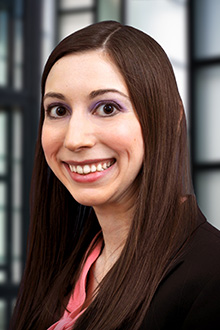Today, the Supreme Court issued an opinion in Kim v. Toyota Motor Corp. (Aug. 27, 2018, S232754) ___ Cal.5th ___, analyzing whether evidence of industry custom and practice is admissible in a strict products liability action. The court held that “[e]vidence that a manufacturer’s design conforms with industry custom and practice is not relevant, and therefore not admissible, to show that the manufacturer acted reasonably in adopting a challenged design and therefore cannot be held liable; under strict products liability law, a product may contain precisely the same safety features as other products on the market and still be defective. But even though evidence of industry custom and practice cannot be dispositive of the issue, it may nevertheless be relevant to the strict products liability inquiry, including the jury’s evaluation of whether the product is as safely designed as it should be, considering the feasibility and cost of alternative designs.” (Slip opn., pp. 1-2.)
The plaintiffs brought a strict products liability action against Toyota Motor Corporation claiming that their pickup truck was defective because its standard configuration did not include a safety feature, known as vehicle stability control (“VSC”), they claim would have prevented the accident. At trial, the jury heard evidence that no vehicle manufacturer at the time included VSC as standard equipment in pickup trucks. (Slip opn., p. 1.) The court explained that the risk-benefit test announced in Barker v. Lull Engineering Co.(1978) 20 Cal.3d 413, 418 (Barker), “calls on juries to consider whether a design is safe enough, given ‘the relative complexity of design decisions and the trade-offs that are frequently required in the adoption of alternative designs.’ [Citation.] Depending on the circumstances, evidence of other manufacturers’ design decisions may aid the jury’s understanding of these complexities and trade-offs, and thus may provide some assistance in determining whether the manufacturer has balanced the relevant considerations correctly.” (Slip opn., p. 13.) Evidence of industry custom and practice can thus shed light on the condition of the challenged product. (Id. at p. 17.)
The court formulated the following test for admitting industry custom and practice evidence in a design defect case:
First, the party seeking admission of such evidence must establish its relevance to at least one of the elements of the risk-benefit test, either causation or the Barker factors. [Citation.] The evidence is relevant to the Barker inquiry if it sheds light on whether, objectively speaking, the product was designed as safely as it should have been, given ‘the complexity of, and trade-offs implicit in, the design process [Citation.] Whether the evidence serves this purpose depends on whether, under the circumstances of the case, it is reasonable to conclude that other manufacturers’ choices do, as the Court of Appeal put it, ‘reflect legitimate, independent research and practical experience regarding the appropriate balance of product safety, cost, and functionality.’ If the proponent of the evidence establishes a sufficient basis for drawing such a conclusion, the evidence is admissible, even though one side or the other may argue it is entitled to little weight because industry participants have weighed the relevant considerations incorrectly. The evidence may not, however, be introduced simply for the purpose of showing the manufacturer was acting no worse than its competitors.
Next, even if the party seeking admission of such evidence meets this threshold burden, the trial court retains the discretion to exclude this evidence [under Evidence Code section 352]. And finally, if the party opposing admission of this evidence makes a timely request, the trial court must issue a jury instruction that explains how this evidence may and may not be considered under the risk-benefit test. [Citation.]
(Slip opn., pp. 18-19.)
